Adrianna Ault: The Ache to Understand
Adrianna Ault’s work reflects a young life stretched between New Orleans and rural Ohio, given dimension by a long sojourn in New York City. Ault currently lives in the Hudson Valley where she keeps a studio, working primarily with film and guided by what she calls "a bit of intuition, a drop of courage, and a learned experience of knowing something incredible can emerge in the place where you let your grip go," Ault has spent years developing a visual language that speaks to the spaces where loss slowly transforms into understanding.
I came upon Adriana Ault’s work on social media; scrolling through a timeline, seeing images in quick succession. A photograph of the remnants of a barn came into view—angled, falling even as it rose to meet my sightline in the display. I lingered over the image as it hummed with the frequency of delicate, subliminal loss. Interest piqued, I followed the links to Ault’s own site, the photographs were beautiful and complicated, portraits of spaces from another time that were quietly reaching into our own.
Over the summer, I had the opportunity to speak with Ault about her photography. She spoke about her intuitive way into the work, building a narrative in her books and “how we're sustained by those who came before us”
Ault's most recent monograph Levee, was published by VOID in 2023. Her latest work Through a River Darkly was photographed through two winters spent plunging into a river in upstate New York.
Eric Hurtgen
___
New Rural (NR): I really enjoy the prints and images that I've seen from your project Impeded Stream. It seems to be a meditation on rural land and how it sustains us and maybe, also, family and how we're sustained by those who came before us. I'd love to know more about that project and how you came to work on it.
Adrianna Ault (AA): Yes—a meditation on rural land and how it sustains us. And maybe, also, family and how we're sustained by those who came before us. I didn't come by this understanding until I made the work. My work is my teacher. I listen what it tells me to do and in this way, I learn from it.
I don't practice writing as much as I'd like to. As a single mom and an artist, it doesn't always allow for time to read and write as a regular practice. My practice is mostly visual—making photographs and editing—and it takes all my time.
I consider myself blunted when it comes to verbally expressing ideas and thoughts around the images I'm making. That practice has begun to come more naturally but without making the work, I feel completely blindsided. I rely almost entirely on instinct, curiosity, desire or ache to understand something I can't through writing. I'm forever grateful to have a tool, a camera, to help me do so.
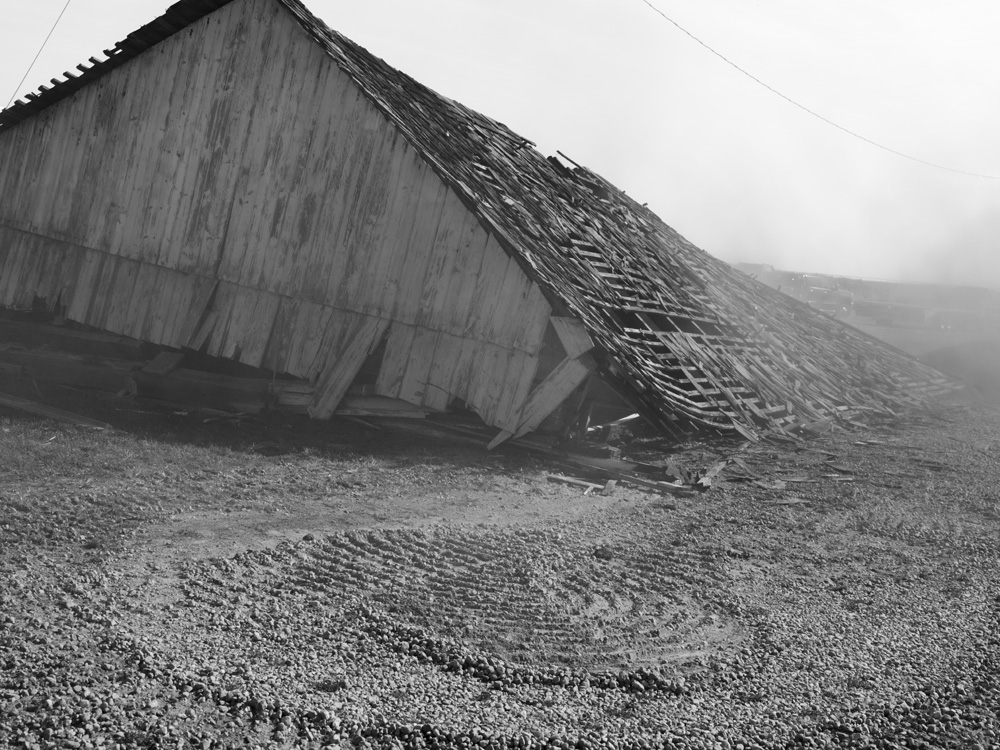 Adrianna Ault, from The Impeded Stream
Adrianna Ault, from The Impeded StreamThe Impeded Stream is something that began with the work I made during the auctioning of my family farm in 2016. I don't feel like it's a project that has a beginning and an end. It's growing and changing over time. I continue to make work for it. It's more like chapters of a past, present, and future story I'm uncovering.
I spent my summers as a kid on the farm and it holds so many secrets that I’ve discovered through making the work. I sometimes know that when I don't feel like going back to take photos there, it most likely is a sign that I should. It means that I have to let my assumptions about the farm and all of the narratives I've built around it go—that is when the "seeing" really begins. This time is ripe for seeing what I couldn't imagine and is better than any idea I could have come up with on my own.
I used to take a lot of editorial portraits. I'd take photos in hopes that the person sitting for me would get exhausted with keeping up their mask. Some of us spend our whole lives doing this. I can only hope it doesn't take that long to get to what's really in front of me—to let my guard down and see what the world has become while I have been busy coming to conclusions. In this way, the impeded stream is my life work—the lab in which I exercise my practice of seeing. I believe we all have a place we can go to do this. The farm is mine.
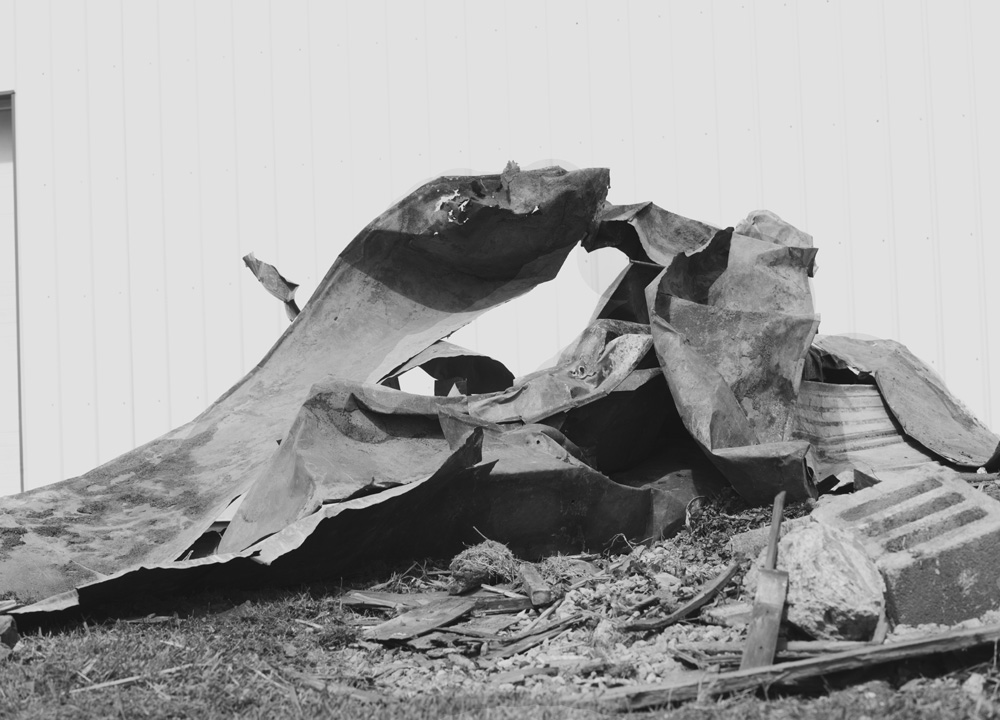
Adrianna Ault, from The Impeded Stream
To get back to the question, "How did you come to work on it?" I knew back in 2016 that going to the farm auction would stir me. I packed up my cameras and tons of film. My partner at the time, Raymond Meeks, offered to come with me. I was grateful to have someone there photographing with me. It encouraged me when I wanted to fall down and cry as I watched farmers carrying away the tools and machinery that my family used to grow food for over a century. It took me years before I could engage with the work.
We collaborated on a book called Township with Tim Carpenter and Brad Zeller with TIS books. I named the book, and aside from scanning and editing I did very little to bring that book into being. I was grateful to have collaborators for that first work. I felt like I had no voice. I couldn't not speak. I was frustrated with my inability to process or engage with the work. The loss felt too big and haunting.
That frustration led me back to photographing the farm on my own, making more work, and learning to break from the idea to the unknown. This work led me to the discovery of my artistic practice as a photographer and maker of books: a bit of intuition, a drop of courage, and a learned experience of knowing something incredible can emerge in the place where you let your grip go.
The title of The Impeded Stream was taken from a title from a poem by Wendell Berry called "Our Real Work." In hindsight, "Our Real Work" might have been quite aproppo.
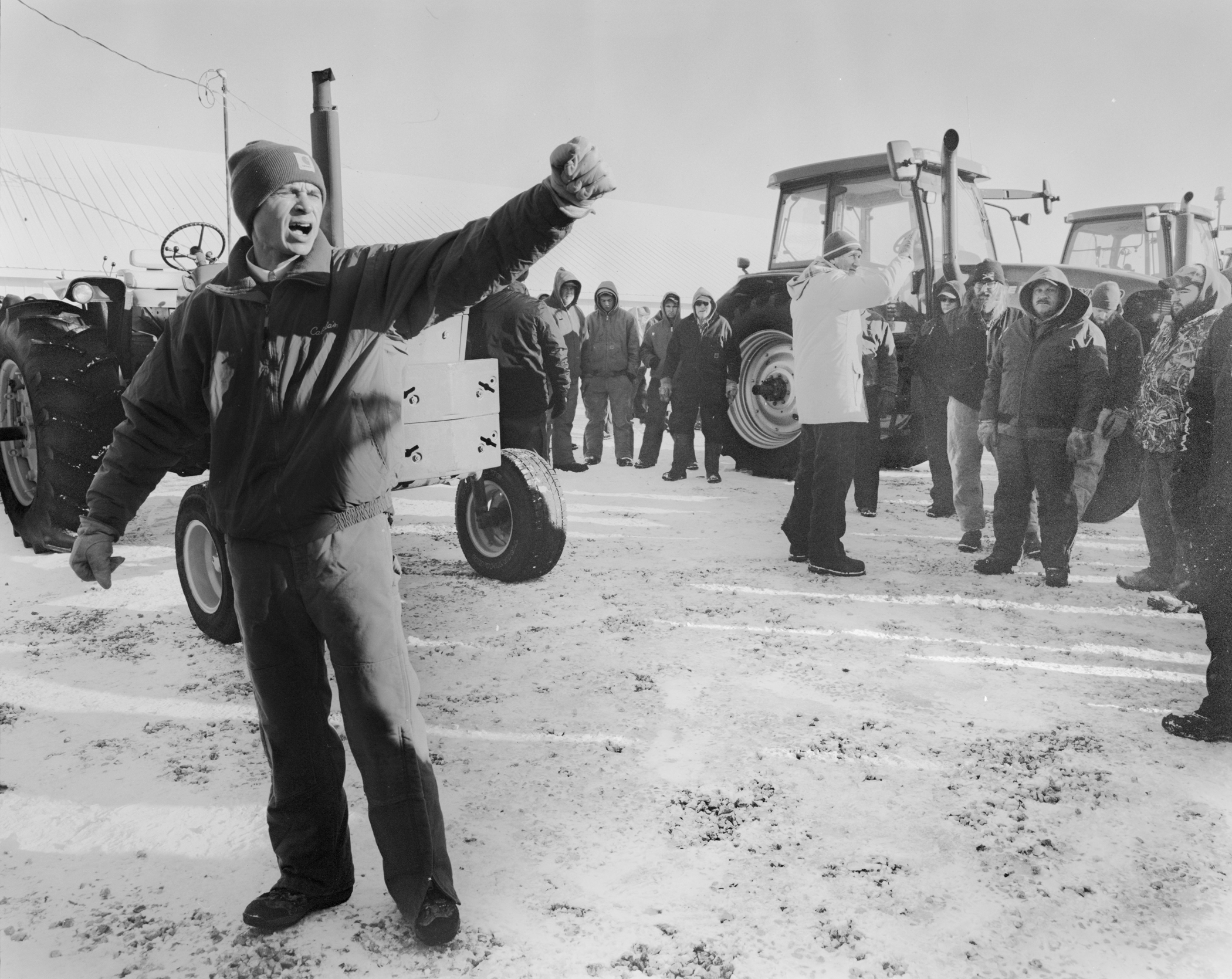 Adrianna Ault and Raymond Meeks, from Ohio Farm Auction
Adrianna Ault and Raymond Meeks, from Ohio Farm Auction
NR: Yes, I love that—"the impeded stream is the one that sings." I’d wondered if that was from the Berry poem, it felt right for the work that I've seen of the project. So many wonderful layers of meaning there. It seems that your current art practice really began with the auction of your grandparent's farm—in that twilight space between what was and then what would be. It seems like this is where a lot of your practice exists—in the transitional spaces. Is that fair to say?
AA: Yes, most definitely. But I'm hardly alone in making work about that "transitional space." I mean, aren't we all trying to understand the past and how that relates to the future? Photography never really gets boring for me in this way. Even when you are dealing with the moment, once you photograph it becomes something in the past. What is this? Where is the connection? I try not to think too much when I'm making pictures. Editing and looking at pictures is when I look for relationships and clues to follow. Making and editing over and over until a thread emerges. Discovering the thread is how I learn from my work.
There is nothing extraordinary about my life. I feel, love, get frustrated, angry, jealous, generous, suffer like most people. Navel gazing isn't behind my quest to make photographs. Looking at my own life is just a place to begin to see a bigger picture. My photography teacher in undergrad once told me, "Start with something familiar, something you know." I like that because it helped me develop my own visual language.
If you start learning a new language when you don't live in the culture where the language is spoken, you begin with a larger deficit in understanding and developing your way of speaking that language. Body language, cultural background, emphasis on vowels and sentence structure all play into communicating ideas with your voice. I begin with something I want to understand in my own life and a visual language feels natural to me. There is very little in my life that doesn't speak to a broader and more universal conversation.
Back to photography—nothing in it is true or real (past, present or future), but books have an intimate way of building a narrative as we turn from page to page. The single image is not relied on completely. My greatest hope in the book form is to walk alongside the viewer into a world I have felt, and they leave with something they have felt. It makes no difference if what we feel is the same.
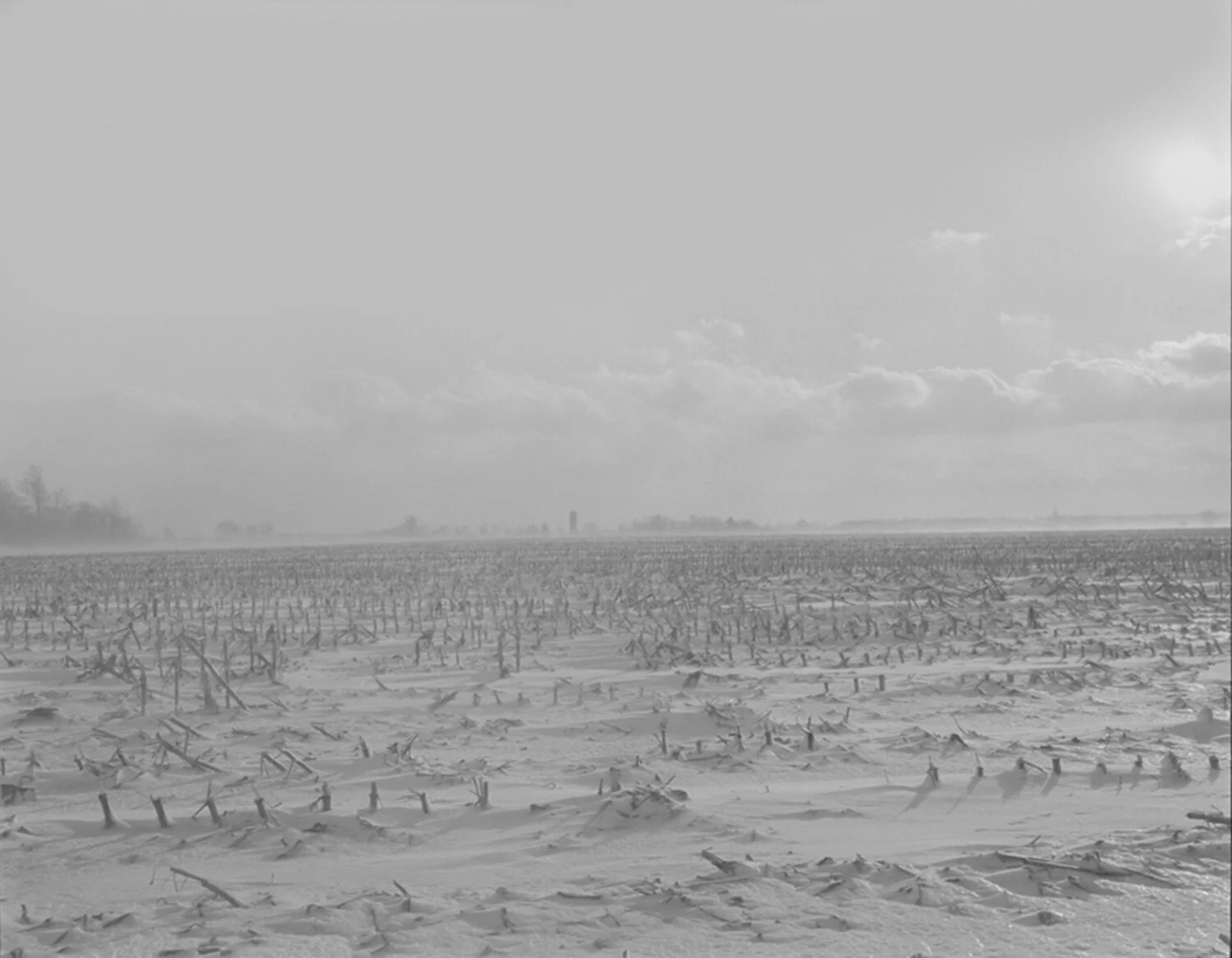
Adrianna Ault and Raymond Meeks, from Ohio Farm Auction
NR: I really like this idea of making photographs and learning a language—that deficit in understanding and finding your way of speaking in that language seems very true. That is the transitional space that we're all in, in some way or another. I also like your idea about making books—that there isn't a reliance on a single photograph but that the art arises from the context of the whole.
I’m interested in your work as you move forward—where do you feel your work being drawn currently? Will you release the Impeded Stream series as a book and are there are other book projects that you're working on?
AA: I consider Impeded Stream a lifelong project. It's so personally tied to grief and loss of family. I know it will change and continue to grow over time. Making artist books of this work informs the direction and how to develop it further. I will revisit the farm towards harvest this year and work towards another artist book. Having this longer-term ongoing project in the background allows me to develop other projects so I can return to it with time in between and fresh eyes. This way of working with something so close to me allows me to see the work and give it what it needs, further learning the language of the photographs. I would love to eventually have a larger publication of this work. But I'm not yet sure if it's one book or several short stories. It continues to evolve as my perspective changes.
My first monograph, Levee, was published by VOID in 2023 and took me 5 years to complete. Though it was very personal, I found my way to translate it into something more universal. My mother was dying of cancer and my young daughter was growing up. I would spend time with my mother (in New Orleans) and I would leave her bedside to photograph on the levee there.
I had to learn to trust that I could make photographs that could speak to something I wasn't able to point my finger towards or to say—this is her and I'm losing her. I learned how to trust a way of making photographs without being guided by the idea. In addition to letting go of something so literal, those years spent photographing along the Mississippi River's levees were transformational in my color work. I found a color palette and cadence for the work. It took making more dummies than I ever imagined to get there. And then what really helped me the most was handing it over to someone else. The book was beyond what I could have done alone without Myrto and João from Void publishing.

Adrianna Ault, from Levee
After Levee was published, I began looking for something in my archive to create a special edition. During that time, I began photographing while cold plunging in a river with my friends who were dealing with depression. This work and the levee work culminated in a limited edition artist book, Through a River Darkly. The special edition of Levee included the artist book, a handmade framed silver gelatin print, and the VOID published book, Levee.
Through a River Darkly began as an idea to go from the levee into the water. Now that I have been photographing in the river throughout two winters in upstate New York, it has developed into work of its own. Something has begun to appear in the photographs that I didn't anticipate. There is a physical transformation that occurs when in the water above and below the surface. But a liminal space appears as well. This "space inbetween" is an unconscous return to the work I made in Levee. This discovery is exciting becasue I wasn't sure if that was even possible. I've published a limited edition of 60 copies of this work and am focused on editing the photographs I made earlier this year to become a published trade edition.

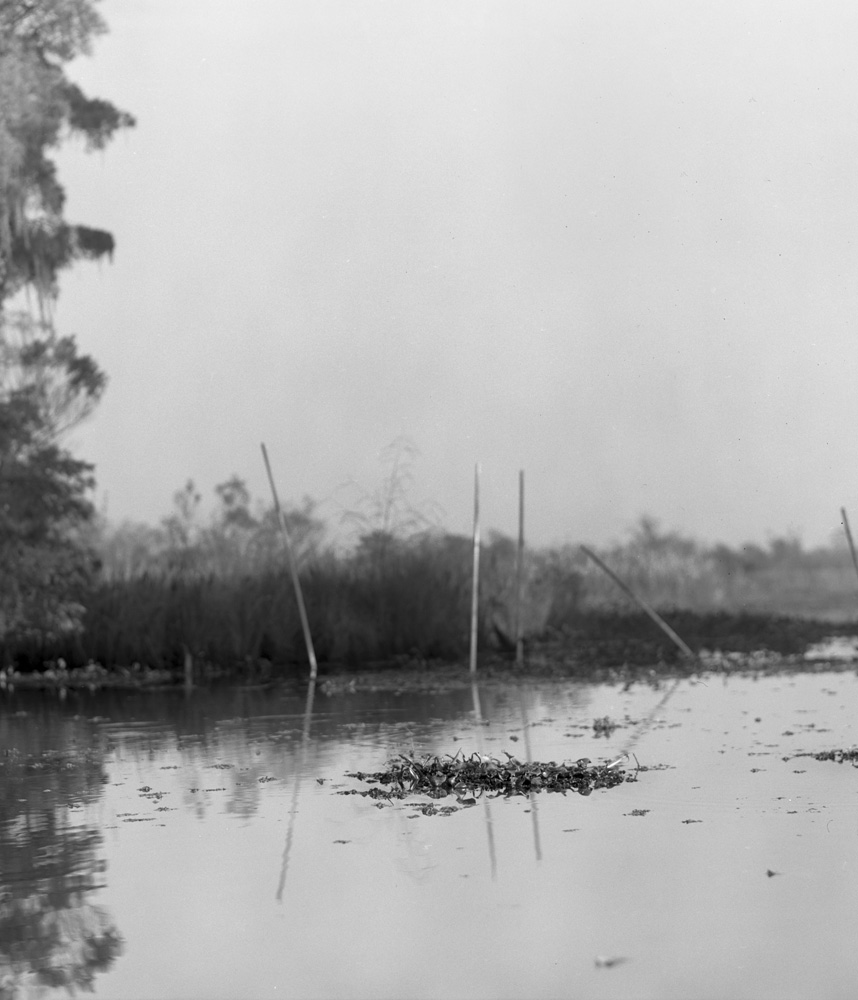
Adrianna Ault, from Through a River Darkly
I'm always looking for an unconscious way to describe an inner world with the outer world. I'm stuck in a yearning to see beyond what is visible. Something that can only be found by forgetting what it is before me. This is partly why I love making books. Images can tell stories without a linear narrative that give the viewer a connection to something within themselves without illustration. Or I guess, that is what I aspire to.
As the tactile world falls away through technology (phones, computers), books can bring us back to the object. We can hold it, feel it, and turn the page. I don't think that makes me "old school". I use film and digital cameras and spend my fair share on the internet and social media. However, it all feels fleeting. Those images don't make me fall to my knees or come back to me in a dream like physical images or a photobook can.
AdriannaAult.com